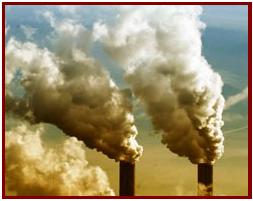
A long overdue regulation of the power industry in the view of supporters is under attack by Republicans and some but not all power companies.
In today’s what is not news item, Karen Harbert, the Energy Institute President of the U.S. Chamber of Commerce called on the EPA to ensure that any new powerplant emission rules are cost-effective, attainable, and don’t harm the American economy. These code words translated into English mean “we won’t pay for the mess we are making.”
Once again, the Chamber said that the Clean Air Act was never intended to regulate greenhouse gas emissions, a position that even the anti-environment Republican-stacked U.S. Supreme Court has upheld.
EPA’s proposed standard was required by a 2007 Supreme Court ruling ordering the agency to move forward with regulation of greenhouse gases. Powerplants are the largest concentrated source of emissions in the United States, together accounting for roughly one-third of all domestic greenhouse gas emissions. Currently, a dozen states have already implemented or are implementing their own programs to reduce carbon pollution. In addition, more than 25 states have set energy efficiency targets, and more than 35 have set renewable energy targets. Widespread public support has not stopped Republican opposition to a cleaner environment.
After taking office in 2009, President Obama – prompted by the Supreme Court decision affirming that the Clean Air Act covered greenhouse gases – directed DOT and EPA to speed development of auto fuel efficiency and greenhouse gas emissions standards on a national basis. The previous Bush Administration had declined to do so, leading to lawsuits from environmental groups, potentially causing chaos and economic harm to automakers, as well as hurting the U.S. economy.
EPA in 2009 determined that “greenhouse gas pollution threatens Americans’ health and welfare by leading to long lasting changes in our climate that can have a range of negative effects on human health and the environment.” Tougher national fuel economy standards ensued. Now it is the power industry’s turn. Currently, there is no uniform national limit on the amount of carbon pollution new powerplants can emit, which comes from burning fossil fuels.
In Harbert’s testimony at the EPA’s Washington, DC “listening session” on the proposed regulations, she outlined the obstructionist business community’s continued objections with both the forthcoming rules themselves and the process through which EPA is soliciting input.
“If EPA continues to insist on stretching its Clean Air Act authority, then the agency should work to ensure that this regulation is reasonable and technologically achievable on a commercial scale,” Harbert claimed.
The many critics of Harbert and the Chamber claim with much justification that they are owned body and soul by the coal and oil industries. Furthermore, the technology exists to clean up the emissions.
“It is also vitally important that EPA aim to preserve the affordability of electricity, maintain the reliability of the electric grid, and allow for coal to sustain its vital role in the nation’s diverse energy portfolio,” Harbert said, apparently without her nose growing longer.
See AutoInformed on:

